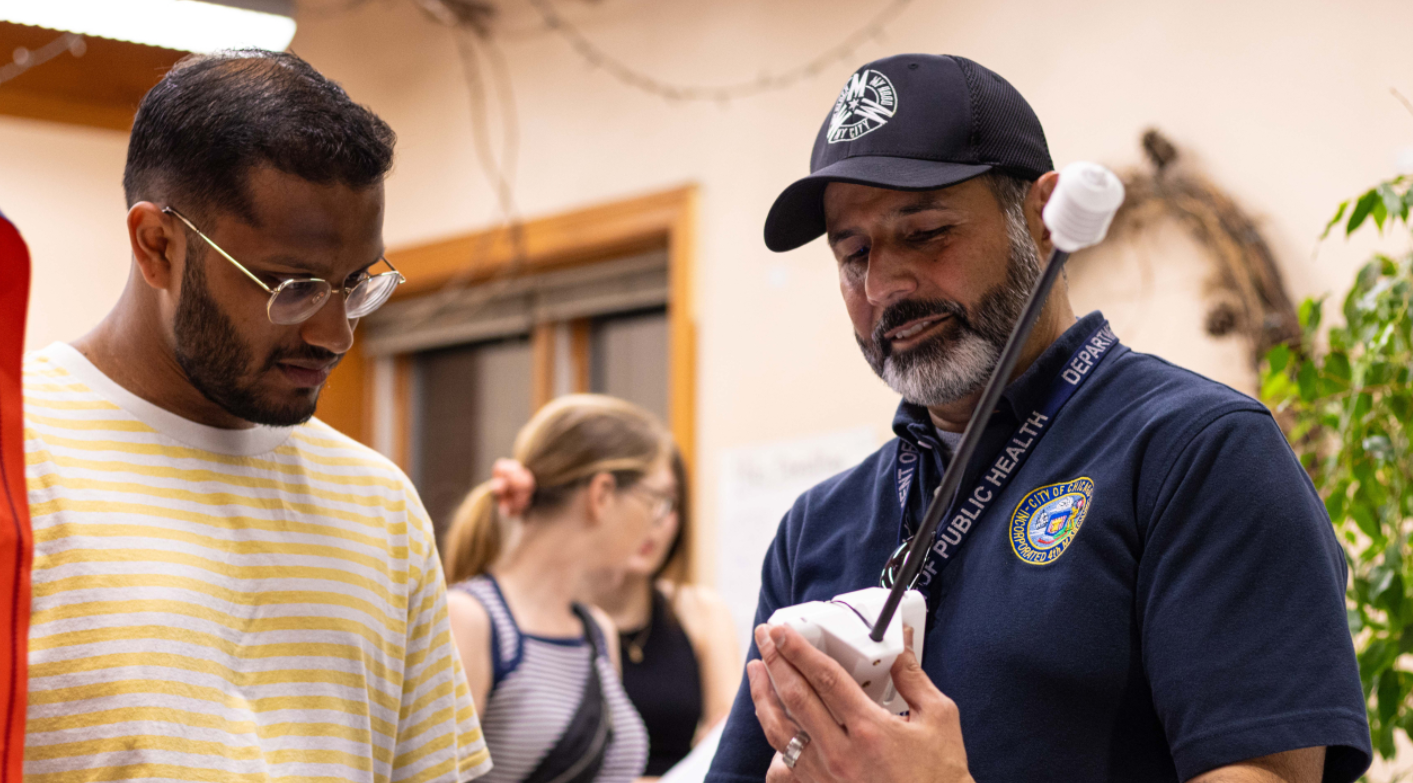Getting Started > Step 1. Learn about citizen science
Why collaborative heat monitoring?
Citizen science is a new word to describe an old way of doing science.
The idea that only certain people with formal education in a scientific discipline are “allowed” to do science is a relatively new one. For centuries, ordinary people participated in scientific inquiry and made important scientific discoveries simply because they were curious about the natural world, not because they had letters by their name or diplomas on their walls.
In the past few decades, research universities have worked to formalize the contribution of citizen scientists through community partnerships and participatory methodologies. Additionally, online apps like iNaturalist or ISeeChange or platforms like Zooniverse make it easier than ever to get involved with large-scale participatory projects and be a citizen scientist.
Citizen science is also sometimes referred to as community science or participatory sciences.
What is citizen science?
Citizen science (or community science) happens when communities and scientists do science together to advance local priorities. “Doing science” includes defining questions, designing protocols, collecting and analyzing data, and using scientific knowledge in decision-making.
Thriving Earth Exchange, “Is it Community Science? The CCHM’s approach to citizen science (or community science) is closely modeled on the Association of Science and Technology Centers’ (ASTC) Community Science Initiative toolkits and materials.In 2017, the National Oceanic and Atmospheric Administration partnered with CAPA Strategies to support citizen science efforts to map local heat patterns in American cities and make the data publicly available for anyone to use, including forecasters, researchers, and businesses. Over the next 8 years, NOAA supported heat mapping campaigns in over 80 U.S. cities.
The Center for Collaborative Heat Monitoring was established in 2024 on the idea that the approach used to map urban heat islands could be broadened to include other types of communities, especially rural communities, as well as other types of heat monitoring.
Why citizen science for heat monitoring?
Highly local, granular weather data: The NOAA Urban Heat Islands heat maps have helped local decision makers identify “hotspots” or “urban heat islands” where temperatures might vary as much as ten degrees Fahrenheit from the official temperature provided by local weather stations. Once city and county officials learned where citizens were most likely to experience heat, they were able to make informed decisions about how to prepare for and respond on extreme heat days.
Improved buy-in from local participants: Because data is collected by volunteers who live and work in the area where data was collected, there can be a much stronger sense of ownership of both the data collected and the solutions proposed by local leaders.
Public education for all ages: Citizen science projects are an important opportunity to raise awareness about the impacts of extreme weather at the local level and prepare the next generation of scientists. By encouraging volunteers of all ages to participate, citizen science campaigns are a great opportunity to teach aspiring young scientists about how to conduct innovative field research.
What makes for a collaborative heat monitoring campaign?
Organized by local leaders and organizations (which can include a combination of city, town, or county officials, educational institutions like schools, museums, or libraries, or nonprofit organizations) with a deep understanding of the ways that extreme heat affects the places where they live and work
Preferably, those leaders have identified other collaborators to create a broad coalition of groups with different perspectives, to ensure that the heat campaign represents the needs of everyone in the community being mapped or studied
Uses low-cost heat monitoring tools and sensors that capture the experience of extreme heat as it is felt by humans on the ground, rather than a more regional reading as is collected by weather stations
Involves active participation of volunteer scientists; this can include collection of data for mobile heat campaigns or installation and ongoing stewardship of stationary sensors
Produces data that meets standards for sound science, to ensure that locally collected data can be incorporated into a broader body of knowledge about heat science
Produces data that is understandable to decision makers and the general public, and can be used as a starting point for meaningful conversations about heat resilience and preparedness for extreme weather
Heat science is better together.
The Center for Collaborative Heat Monitoring is working towards increasing our capacity to provide consultations and support for community-based heat monitoring campaigns.
Sign up to be the first to receive information about future opportunities to work with us.


